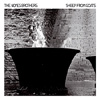 Another chapter in LTM's Boutique Label reissue campaign of obscure Manchester post-punk label Object Music, this collection presents more than 100 minutes of experiments, improvisations, skewed pop, drone-laden blues, minimal electronic synthpop and weird, dislocated Nurse With Wound-style audio surrealism. A reissue of a double-album originally issued in 1980—a collaborative release by labelmates Steve Solamar (Spherical Objects) and Steve Miro—Sheep From Goats was certainly the most adventurous release by Object Music during its brief existence.
Another chapter in LTM's Boutique Label reissue campaign of obscure Manchester post-punk label Object Music, this collection presents more than 100 minutes of experiments, improvisations, skewed pop, drone-laden blues, minimal electronic synthpop and weird, dislocated Nurse With Wound-style audio surrealism. A reissue of a double-album originally issued in 1980—a collaborative release by labelmates Steve Solamar (Spherical Objects) and Steve Miro—Sheep From Goats was certainly the most adventurous release by Object Music during its brief existence.
- Administrator
- Albums and Singles
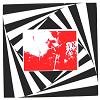 This vinyl-only release from one of Japan's finest psych bands has truly snuck out without fanfare. Currently only available as a very small run LP (although the label appear to be planning to repress it), this is the best releases in Up-Tight's already impressive catalogue. This LP sees them thrust their sound into the abyss and they jump fearlessly in after it.
This vinyl-only release from one of Japan's finest psych bands has truly snuck out without fanfare. Currently only available as a very small run LP (although the label appear to be planning to repress it), this is the best releases in Up-Tight's already impressive catalogue. This LP sees them thrust their sound into the abyss and they jump fearlessly in after it.
It is immediately obvious that Up-Tight have upped their game since their last studio releases. Both Lucrezia and Up-Tight & Makoto Kawabata had that typical PSF Records Japadelica sound, they hit all the right spots and were shit heavy when they needed to be. However, now they seem to be following their ultimate influences, The Velvet Underground, into a wider creative territory. Each of the four pieces that make up The Beginning of the End sound like they could have been from a different but equally great band (exactly what made the Velvets so good).
The first side of the LP opens with “Our Own Portrait” which sees Up-Tight move away from their Les Rallizes Dénudés Junior image and into something even more psychedelic; primal drumming and an insistent bassline allow for Tomoyuki Aoki to unleash some fantastic fuzz guitar. This is followed by “A Song for Your Pain” which is a gentle, sleepy ballad with, of course, more fuzz guitar solos. It is more in line with the quieter parts of previous Up- Tight albums and is the one moment on the LP where they play it safe. Though playing it safe for this band is still something special.
The second side is a different kettle of fish as an oppressive bass buzz and distant cracks of guitar herald in (the aptly titled) “The Destruction.” As the drums join in the din, Up-Tight start to take on the form of early Boris yet create a wall of noise with more power, mass and menace than Boris ever managed to muster. By the end of the piece my turntable has almost rattled itself to pieces; it is one of the most sublime examples of noise freakout to come from Japan (and that in itself is some achievement). The title track rounds off the album, seeing the trio return to a more familiar style. It brings to mind the live jams that appear on the 2007 reissue of the eponymous debut: a languid rhythm and years of reverb drenching the guitar and vocals.
By far this is the best thing Up-Tight have put their name to. It covers all the things that makes Japanese psychedelica interesting to me; the extremes of bludgeoning noise and the delicate beauty without ever becoming something clever for the sake of being clever. The Beginning of the End is worth every mistaken or wayward purchase from the Japanese section of record store, it is superb.
This album is currently vinyl only so unfortunately no sound samples at this point in time, apologies!
Read More
- Administrator
- Albums and Singles
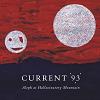 Words like armageddon and visionary get tossed about around David Tibet (for good reason) but with this latest album, these words seem too small and meek. As hinted on Black Ships Ate the Sky and the split EP with Om, David Tibet has embraced a blistering rock aesthetic for his apocalyptic visions. Sounding as psychedelic as Of Ruine Or Some Blazing Starre or The Inmost Light trilogy, there is also a heaviness here not heard since the noisy tape loops of Current 93's embryonic period. Tibet sings of Aleph (an Adam-like character), murder, and destruction as a huge cast of musicians and vocalists create a backdrop worthy of his vision.
Words like armageddon and visionary get tossed about around David Tibet (for good reason) but with this latest album, these words seem too small and meek. As hinted on Black Ships Ate the Sky and the split EP with Om, David Tibet has embraced a blistering rock aesthetic for his apocalyptic visions. Sounding as psychedelic as Of Ruine Or Some Blazing Starre or The Inmost Light trilogy, there is also a heaviness here not heard since the noisy tape loops of Current 93's embryonic period. Tibet sings of Aleph (an Adam-like character), murder, and destruction as a huge cast of musicians and vocalists create a backdrop worthy of his vision.
Tibet’s mythology grows more and more esoteric with each album, a blend of his own internal imagery and biblical terror (stemming from his ongoing obsession with scripture and study of Coptic in order to get closer to the source). “Almost in the beginning was the murderer” states the child’s voice at the beginning of the album. From here on in, everything explodes as one of the best line ups yet for Current 93 let rip. Alex Neilson’s drumming sounds like thunderclaps at the end of the universe as layers and layers of guitars, feedback and distorted vocals tear through reality. During “On Docetic Mountain,” fragments of the familiar folk strains haunt the works of Current 93 swim through the surging pulse, creating a thick and disorientating experience which brings to mind Thee Silver Mt. Zion at their most raucous. Bill Breeze’s viola and John Contreras’ cello sound almost regal amidst the grinding fuzz that the rest of the group are pouring out. Later on, the rock swamps everything; guitar solos that can only be described as shambolic, face melting blasts of white heat cut through a doom-laden riff on “Not Because the Fox Barks.” There is a first time for everything in life and playing air guitar along to Current 93 is one of them.
With no particular focus beyond a general feeling and Tibet’s vision(s), Aleph at Hallucinatory Mountain sticks out like a monolith in Current 93’s canon. Fears that this album would be a disparate work breaking under the weight of Tibet’s many collaborators were completely unfounded. Andrew W.K. and Sasha Grey may be famous for things quite different to Current 93 (as every single article or Internet discussion related to this album seems to dwell on) but they sound as home here as any Current 93 regular. Grey’s detached vocals on “As Real As Rainbows” are a world away from her usual performances (researching for reviews can be a very tough job) and she provides a sober and melancholy ending for such a vivid and energetic album.
Aside from some of the electronics and effects dotted throughout Aleph at Hallucinatory Mountain and the knowledge that it is just out this week, it would be difficult to place this album in time. It could easily be one of those obscure gems that was on the Nurse With Wound list; in fact it sounds almost like the perfect lost treasure from rock’s past. “26 April 2007” has a desert rock vibe but instead of the The Eagles and images of the great plains of America, the music instead conjures up visions of dusty vistas in northern Africa with wanderers trying to find their way back to Eden.
James Joyce once said: "It took me ten years to write Ulysses, and it should take you ten years to read it." While I am not going so far to say (yet) that this album is of the same magnitude as Ulysses the principle holds true here as Tibet and his colleagues have put two years of hard work into making this album the monument it is. Steven Stapleton and Andrew Liles have worked their wizardry in post-production to create the layers of sound that form the base of Aleph at Hallucinatory Mountain, the level of detail buried in the mix is astounding. With each listen there are further revelations, a warped David Tibet as backing vocalist here and a loop of noise there. I imagine that it will be some time before I have exhausted all of the album's secrets.
With an album as epic as this, it is virtually impossible to sum it up succinctly. It is awesome in that from the opening moments to the dying seconds, I am taken aback by the intensity and conviction. As a listener, Aleph at Hallucinatory Mountain drains and exhausts; that Tibet can pull so much emotion from his soul and still function is nothing short of astonishing.
samples:
Read More
- Administrator
- Albums and Singles
 On their second album, Jordan McKenzie and Emi Honda have created a mesmerising experience somewhere between revolution and fairytale. It is difficult to place it accurately in any standard musical taxonomy but with elements of folk, world music and a fierce rock and roll spirit, Elfin Saddle have created some of the most stirring songs to enter my ears recently. From my glib description, they sound on paper to be yet another freak folk act with their own novelty but they are much more than that.
On their second album, Jordan McKenzie and Emi Honda have created a mesmerising experience somewhere between revolution and fairytale. It is difficult to place it accurately in any standard musical taxonomy but with elements of folk, world music and a fierce rock and roll spirit, Elfin Saddle have created some of the most stirring songs to enter my ears recently. From my glib description, they sound on paper to be yet another freak folk act with their own novelty but they are much more than that.
Ringing for the Begin Again begins like any other Constellation album, delicate and mournful strings on “The Bringer” by the label’s resident violinist Jessica Moss and gently hammered xylophone combine to make a beautiful and moving introduction to the album. McKenzie’s vocals sound like a lived-in version of Xiu Xiu’s Jamie Stewart, lilting in the rhythm of Moss’s bowing. His lyrics on this piece and elsewhere on Ringing for the Begin Again have a poetic quality that fits like a glove with the dreamy music. “The Living Light” is easily one of the best songs of the year; the driving rhythm combined with McKenzie’s almost religious singing makes a huge impression with each play through the album.
An entire album like this would be epic but Elfin Saddle have other, equally wonderful things to offer. Honda is the second vocalist in the group and sings exclusively in Japanese. Her songs have a very different tone to them compared to those sung by McKenzie, the music taking on a different beat to match the delivery of her carefully placed syllables. “Sakura” and “The Procession” have a delicate music box quality (although the presence of tuba on the latter track certainly beefs it up), Honda’s voice haunting the melodies. Honda’s crowning achievement however comes with “The Ocean” which complements the tone of “The Bringer” and bookends the album nicely.
It is hard to get these songs out of my head after listening to Ringing for the Begin Again, even the songs in Japanese stick in my brain for hours. Elfin Saddle combine incredibly infectious songwriting with a real passion that sets them apart from other quirky indie acts. Being based in Canada and with the huge list of instruments used on the album (guitar, ukulele, saw, drums, accordion, banjo, xylophone, tuba, violin, etc.) they could easily mistaken as a Broken Social Scene “everything including the kitchen sink” kind of band but they have a simplicity and humanity to them that the likes of Broken Social Scene lack.
samples:
Read More
- Administrator
- Albums and Singles
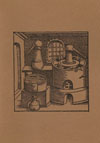 Taking a similar approach to the classic likes of Aube, Bionulor is billed as being focused exclusively on "sound recycling," or using only a single sample or sound as the basis for an entire piece. As a self-imposed limitation this sometimes does keep the compositions to a Spartan minimum, yet just as often become a chaotic mess of layered sounds and effects.
Taking a similar approach to the classic likes of Aube, Bionulor is billed as being focused exclusively on "sound recycling," or using only a single sample or sound as the basis for an entire piece. As a self-imposed limitation this sometimes does keep the compositions to a Spartan minimum, yet just as often become a chaotic mess of layered sounds and effects.
Some of the pieces are intentional details of singular sonic elements: both the opening "nchr.01" and "nchr.03" focus exclusively on singular stringed instrument sounds, left to repeat for lengthy periods with only the most minute changes in dynamics and layering. The changes and variations are there, but are extremely subtle, with more electronically effected sounds serving more as accompaniment to the organic sounds rather than being the dominant focus.
This is a pretty stark contrast to tracks like "pvn.," which opens with subtle ambient tones and cricket-like loops, while plucked string notes are there and clearly defined, the focus becomes much more on the processed sonic elements, via spacey pitch bent tones and more low frequency percussive thuds. The final minutes of the track pile on the effects and noises to a level of pure chaos. This dynamic carries over into “l. fll.” which, though opening with a large pastiche of silence, eventually becomes dominated by digital clicks and cuts over plucked string notes. Piano sounds are allowed to appear in their natural state for most of the piece, but the digital elements are much more the focus.
Unfortunately, these tracks are almost too chaotic for their own good, and the shift from subtle repetition to erratic texture shifts is a jarring one. Tracks like the symphonic "nchr.04" are among the most satisfying, balancing the natural with the digital well.
This is a good debut release, and the concept of limiting ones self to a single sound to create an entire piece is a good one, and definitely goes beyond the limitations of a Boss DD-5 delay pedal that Akifumi Nakajima was too reliant on, but the actual structure and composition needs more attention. A greater focus on development and sequencing as opposed to just a quick transition between moods and textures would be a definite asset to future releases.
samples:
Read More
- Administrator
- Albums and Singles
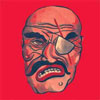 A reissue of an extremely LP from 2007, with an extra 28 minute bonus track, Chain Shot is an accurate title for this extremely lo-fi disc of junky metal, violent raw frequencies, and the complete exploitation of analog technology. Rather than being simply a blast of noise, it is instead a study of textures, as rough as they may be.
A reissue of an extremely LP from 2007, with an extra 28 minute bonus track, Chain Shot is an accurate title for this extremely lo-fi disc of junky metal, violent raw frequencies, and the complete exploitation of analog technology. Rather than being simply a blast of noise, it is instead a study of textures, as rough as they may be.
The LP side-long title track is an aptly titled excursion into metallic violence. It opens with dirty loops and junk metal rattling that are all pushed up on the low end of the frequency spectrum. The loops remain the focus, giving an awkward yet discernable rhythm with flanged stabs at irregular intervals. At full steam, the best comparison would be being within a large metal drum, filled with rocks and scrap metal, as its tumbling down a steep hill. After a lengthy study of tape hiss, the second half of the track focuses less on the physical sounds and more on tones and feedback. This also is given an ungodly bass boost that pushes it into the traditional overdriven grind of harsh noise, with an extremely subtle bit of metal percussion remaining.
The opening horn blast of "Execution Dock" is definitely jarring, a quick burst of multi-tracked trumpet abuse that quickly drops out into a ragged decaying loop of awkward brass. Personally, I’d have liked a bit more of the mutant-core jazz elements to stick around, but it does drop quickly into a stuttering analog loop. As the loop goes on, more horns enter, though much more quiet and restrained, groaning like a sick sheep. Though the horn loop decays away to allow some maxed out tape hiss and bassy percussive thuds, it never fully goes away, remaining up through the harsh noise mid section and into the final fragments of sound.
The third track, "Medusa," is exclusive to the CD and clocks in almost as long as the prior two tracks combined. At 28 minutes, it is given a lot more room to develop as a piece, starting from a barely audible hiss that slowly gets louder and louder, eventually being met with a bassier undercurrent. Static kicks in and is passed through a variety of filters and overdrives, and the old standby of water sloshing sounds appear as well. The track ends with squeaky squelches of noise and what resembles a leaf blower off in the distance. It isn’t a bad track, but it definitely does feel like a "bonus track" compared to the original Chain Shot material, which is much more varied and dynamic in its nature.
One thing that is definitely noteworthy on this album is simply the rawness and the grimy nature of the sound: everything sounds like it’s being played off cassettes that have been neglected in storage for decades. The original material is definitely what shines here, and it is definitely worthy of receiving this wider release, and while the bonus track is somewhat lacking in comparison, it is sill a bonus, and functions just fine in that capacity.
samples:
Read More
- John Kealy
- Albums and Singles
 This tape only release from Bong's Mike Vest sees him create some thick, stoner atmospheres with his guitar but unfortunately the riffs he unleashes with his main band are nowhere in sight. Instead he explores an ambient guitar style that does not quite pay off. Granted there are moments of psychedelic brilliance but the for the most part, the aimless guitar noodling gets in the way of something truly awesome.
This tape only release from Bong's Mike Vest sees him create some thick, stoner atmospheres with his guitar but unfortunately the riffs he unleashes with his main band are nowhere in sight. Instead he explores an ambient guitar style that does not quite pay off. Granted there are moments of psychedelic brilliance but the for the most part, the aimless guitar noodling gets in the way of something truly awesome.
The wavering recording gives the music an ancient, cavernous sound; the low fidelity giving the impression that this recording has been discovered under a pile of musty detritus in a derelict building. The sound is so mushy that most of the time it is hard to identify what instrument is being played. Due to this lack of definition and the limited range of tones being used, the music ends up blurring into itself and after a while my attention levels cannot help but drop; there is only so much wobbly guitar textures that one person can take.
Had Vest made this a shorter release or had been more adventurous with his sonic palette then The Correct Ritual would have been a far stronger release. The situation is not helped by the bizarre (and intentional) formatting of the cassette; the bulk of the album takes up one side of the tape but the strongest piece, the Throbbing Gristle-esque "Queened King," is split across both sides despite there being loads of room on side B to fit all of the music comfortably with a bit of shuffling. As it stands, The Correct Ritual is a sometimes alluring but ultimately confounding release.
Read More
- Administrator
- Albums and Singles
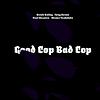 Perhaps one of the most remarkable things about Derek Bailey is that, despite having left this world over three years ago, he is still releasing albums of such high quality. Out of all his posthumous releases, there are few that feel like they are cashing in on his name now that he is not here to object. This latest album sees Bailey perform as part of a frankly spectacular ensemble; the music lives up to the album’s title as it swings from a gentle abstraction to an uncompromising and visceral pummelling.
Perhaps one of the most remarkable things about Derek Bailey is that, despite having left this world over three years ago, he is still releasing albums of such high quality. Out of all his posthumous releases, there are few that feel like they are cashing in on his name now that he is not here to object. This latest album sees Bailey perform as part of a frankly spectacular ensemble; the music lives up to the album’s title as it swings from a gentle abstraction to an uncompromising and visceral pummelling.
With more than one musician battling it out in a free improvisation setting, there is a tendency towards complete chaos and oversaturation of the sonic space. It is a testament to the patience and experience of these four players that Good Cop, Bad Cop is such a spacious and controlled listening experience. Control is not something that is usually praised in such music but all great improvisation is as much about restraint as it is about letting go. Across the five tracks that make up this album (each named after British police shows or phrases related to TV detectives), the moments where all four musicians are playing simultaneously are rare (only on the last and some of the first piece do they play as a foursome). Instead, they tend to pair up and spar with each other before swapping with another player.
On “The Bill,” Paul Hession’s drumming takes the centre stage as Otomo Yoshihide’s electric guitar squall flows like waves against his delicate clattering. It sounds dangerous, the hum of guitar feedback threatening to unleash all manner of violence against the listener like the proverbial bad cop standing silent in the corner of the interview room. It is this mix of almost friendly improv versus the menace of barely contained power makes this album work so well. The title track sees Bailey take on Tony Bevan’s saxophone and while it is a relatively timid performance by Bailey, Bevan is superb here. He sounds like he is blowing his entire life through the instrument’s reeds while Bailey is doing his best to keep things bolted down.
Taken together, the five pieces on Good Cop, Bad Cop add up to a tremendous album. The chopping and changing of the line up throughout makes for an hour of unexpected textures and clashes of styles; overall it is a fun approach taken by the four players and it is a surprisingly easy listen compared to how difficult free music can be. Not that it is usually a problem for me but this is one of those few improv albums you could sneak on during a party and would not get turned off after 30 seconds. I will be trying just that at a series of barbeques this year.
samples:
Read More
- Administrator
- Albums and Singles
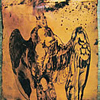 James Blackshaw has released a number of introspective and genre-defying records since his debut on Digitalis Recordings. He has, however, saved his best work for his debut on Young God. With a couple of familiar Current 93 faces behind it, The Glass Bead Game exhibits Blackshaw's experimental preferences, but also showcases his strength as an emotive and able songwriter.
James Blackshaw has released a number of introspective and genre-defying records since his debut on Digitalis Recordings. He has, however, saved his best work for his debut on Young God. With a couple of familiar Current 93 faces behind it, The Glass Bead Game exhibits Blackshaw's experimental preferences, but also showcases his strength as an emotive and able songwriter.
Why Blackshaw named his album after a Herman Hesse novel is anyone's guess. Strong religious and romantic allusions aside, Blackshaw's music is simply and strikingly hypnotic. Its mantra-like quality is perhaps the only qualification required to share a name with Hesse's meditation on the intellectual and mystical. But, this hypnotic color is something every Blackshaw record has featured; his love for the likes of Terry Riley and Erik Satie is not hard to discern and his guitar-playing style lends itself to adjectives like "rolling" and "kaleidoscopic." He has flirted with American folk music and toed the line between classical and modern guitar performances. At a young age he has explored more musical territory than many bands do over the course of an entire career. What differentiates this album from his previous efforts is the quality of the voices added to the arrangements. Accompanying him throughout are Joolie Wood, John Contreras, and Lavinia Blackwall. Flutes, clarinets, violins, pianos, and a stellar vocal performance all support and deepen Blackshaw's already sophisticated and intense approach to composition and performance. It's as if this is the band he has always wanted with him. Together with their talents, Blackshaw sounds more spectral and colorful than ever.
"Cross," the opening song, immediately communicates that Blackshaw and company are out to impress. With all pistons firing, Blackshaw paints a dramatic, but meditative melodic picture with his guitar. His strings are seemingly caught in a never-ending upward movement, each note intent on elevating the song to a higher and more introspective level. In the background, violins and cellos radiate a steady current of calm hums and ghostly utterances. Then, with just a brief pause, the band begins to weave their disparate melodic and harmonic patterns together, further enrichening the song's lively character. Each member bends their instrument, wringing from it more emotion than was present the moment before. This pattern continues until Lavinia Blackwall adds her voice to the mix. Wordlessly, she accentuates the song's beauty with eruptions of melody and effortless soul. Her voice seems to steam off of the music, occuring as a natural result of all the activity already churning beneath it. It's a stunning way to start a record and, after hearing it for the first time, I was uncertain that anything could live up to it. Smartly, Blackshaw goes into deep meditation with both "Bled" and "Fix." His nimble fingers create a ton of sound in both cases, but both songs are less showy than "Cross" and both find Blackshaw focusing on simple and direct arrangements. The latter is a brief and lovely piano-based song fleshed out by understated and cinematic string accompaniments. "Key" bridges the gap between all the previous songs and the concluding "Arc," which is as epic as anything Blackshaw has attempted before. It's moderate pace and gentle dynamics pave the way for the epic conclusion that follows.
"Arc" begins as though it were meant to be played at a funeral. Although the tones pulled from the piano are largely major and bright, they eminate an evocative quietude that only remembrance and yearning can accompany. After a short time Blackshaw's piano erupts into glissandi, as though an epiphany hit him in mid-song. As the piano fluctuates between high and low notes, the song and all of its parts develop a crystalline texture. Each of the instruments begin to blend into one another. "Arc" eventually becomes a mass of glowing sound with different elements peaking their heads above the cascade of music that's been created. The song completely destroys all sense of time and place. Instruments bleed into one another and become disassociated from their source. Whenever a particular sound rises above the others, whether its being made by a voice, an instrument, or a combination thereof can be difficult to determine. Played at loud volumes, it's an absolutely transfixing and ecstatic piece of music capable of procuring an emotional response from the listener. After I heard it for the first time, I found myself with my jaw agape and my breath left short. Something very magical happened when these musicians came together. I can only hope it won't be the last time we see Blackshaw collaborating in such a fashion. It's hard not to talk in a superlative manner about this record; it is majestic and deserving of more accolades and praise than I can possibly write.
samples:
Read More
- Administrator
- Albums and Singles
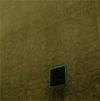 Considering the title, it appears guitarist Christopher Riggs has created a pretty big hole. Among a slew of young experimental musicians whose output often sees highly limited pressings, Riggs, an Oberlin Conservatory graduate, has been making his mark in groups such as Trauma (with Ben Hall and Hans Buetow) and a trio with Hall and Joe Morris. His solo output on numerous labels, including his own Holy Cheever Church Records, has been outstanding as well however, often pushing the brink of his instrument's assumed capacity beyond recognition.
Considering the title, it appears guitarist Christopher Riggs has created a pretty big hole. Among a slew of young experimental musicians whose output often sees highly limited pressings, Riggs, an Oberlin Conservatory graduate, has been making his mark in groups such as Trauma (with Ben Hall and Hans Buetow) and a trio with Hall and Joe Morris. His solo output on numerous labels, including his own Holy Cheever Church Records, has been outstanding as well however, often pushing the brink of his instrument's assumed capacity beyond recognition.
Likely at once Riggs' sparest and most difficult outing, this disc presents five untitled tracks of solo electric guitar improvisations marked by spacious, often nearly imperceptible treatments of the guitar through techniques far beyond usual strum and pick tactics. The opening, for example, is a seven-plus minute piece whose entire sonic output is stretched out among the time period with distinct and sudden blurts of scrape and grate that dissipate back into the white silence as quickly as they appear. Think John Cage meets Derek Bailey, or Alan Licht covering Morton Feldman.
From the beginning then, there is an emphasis on the spaces between the sounds as much as the sounds themselves, or, perhaps better put in this context, the holes are as numerous as the punches making them. Comparatively the second track, opening with a chalk on metal screeching, is downright loud, flitting about between what sounds like tinkling glasses and straws sucking caramel. Nary a recognizable guitar tone rears its head.
The same can be said throughout. The buzzing sound of a bug imitating a dentist drill lurches throughout the third track, as a grating tone pitch shifts back and forth beneath, eventually making its way to the head and lodging itself there, left to brew menacingly before breathy bowed drones wind and crack themselves into a heaping alien landscape. This is some extremely advanced and entirely organic improvisation that truly manages to carve out new approaches to sound-as-sound.
Perhaps most harrowing is the fourth track which, following the previous two, consists of 15 minutes of muffled stutters buried beneath vast crevices of emptiness. Christopher is willing to go as long as he needs to in order to make every sound count, and the result is as spare as they come. Sounds come and go throughout, but they are far from the norm. The closing fifth track sounds like a tea kettle whistle in a cavern, with static white noise writhing below the chirping bowed high end before bending like a rubber band into a frenetic release of tension whose quick cut-off leaves the album's end as mysterious as its beginning.
Christopher Riggs is a guy who deserves some attention. Anyone who has heard his playing with Hall and Morris knows that the guy has chops, but it is this stuff that really pushes the boundaries. Seemingly coming from a stance aligned more with the classically-based sound experimentalists of the twentieth century than the noise practitioners he often plays with, Riggs nevertheless walks the borders with aplomb, at once translating both sides into one another until any cultural delineation disappears and the sounds are left to do as they will. Beautiful, original and fully realized, this is work well worth grabbing before its 18 copies are gone forever.
samples:
Read More
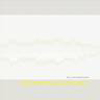 Using shortwave radios to pull sounds out of the ether has been a longstanding tradition in experimental music. Karlheinz Stockhausen and John Cage were perhaps the first to explore this area, fascinated by the possibilities inherent in using the radio as an instrument. It is often left to a second generation of explorers to further develop the discoveries made by the first trail blazers. In 1982 William Basinski carved out his own territory in the worlds of shortwave sound with nothing more than a receiver and his trademark loops of tape. First released on Noton as an LP in 1997, it has been made available once again, this time on compact disc from Basinski’s own label.
Using shortwave radios to pull sounds out of the ether has been a longstanding tradition in experimental music. Karlheinz Stockhausen and John Cage were perhaps the first to explore this area, fascinated by the possibilities inherent in using the radio as an instrument. It is often left to a second generation of explorers to further develop the discoveries made by the first trail blazers. In 1982 William Basinski carved out his own territory in the worlds of shortwave sound with nothing more than a receiver and his trademark loops of tape. First released on Noton as an LP in 1997, it has been made available once again, this time on compact disc from Basinski’s own label.

